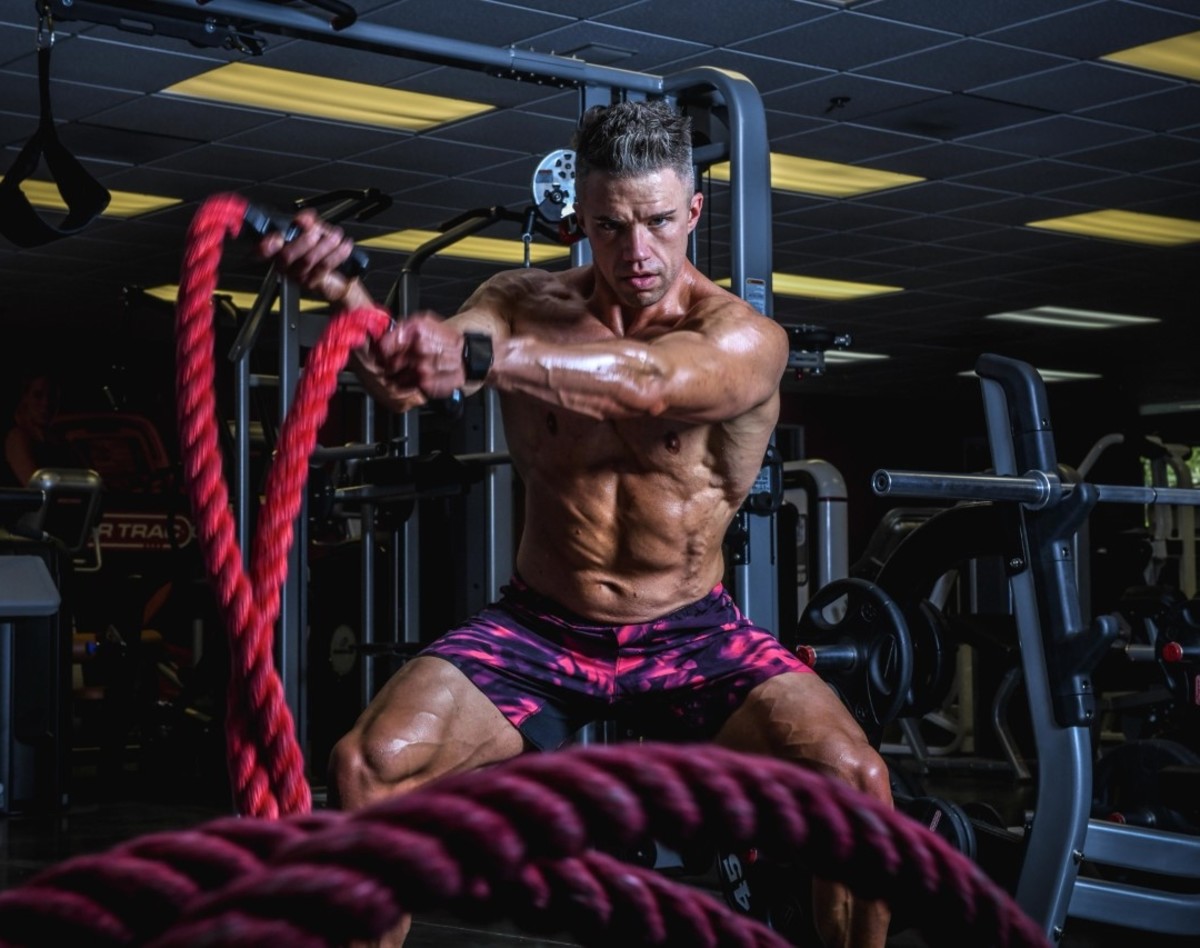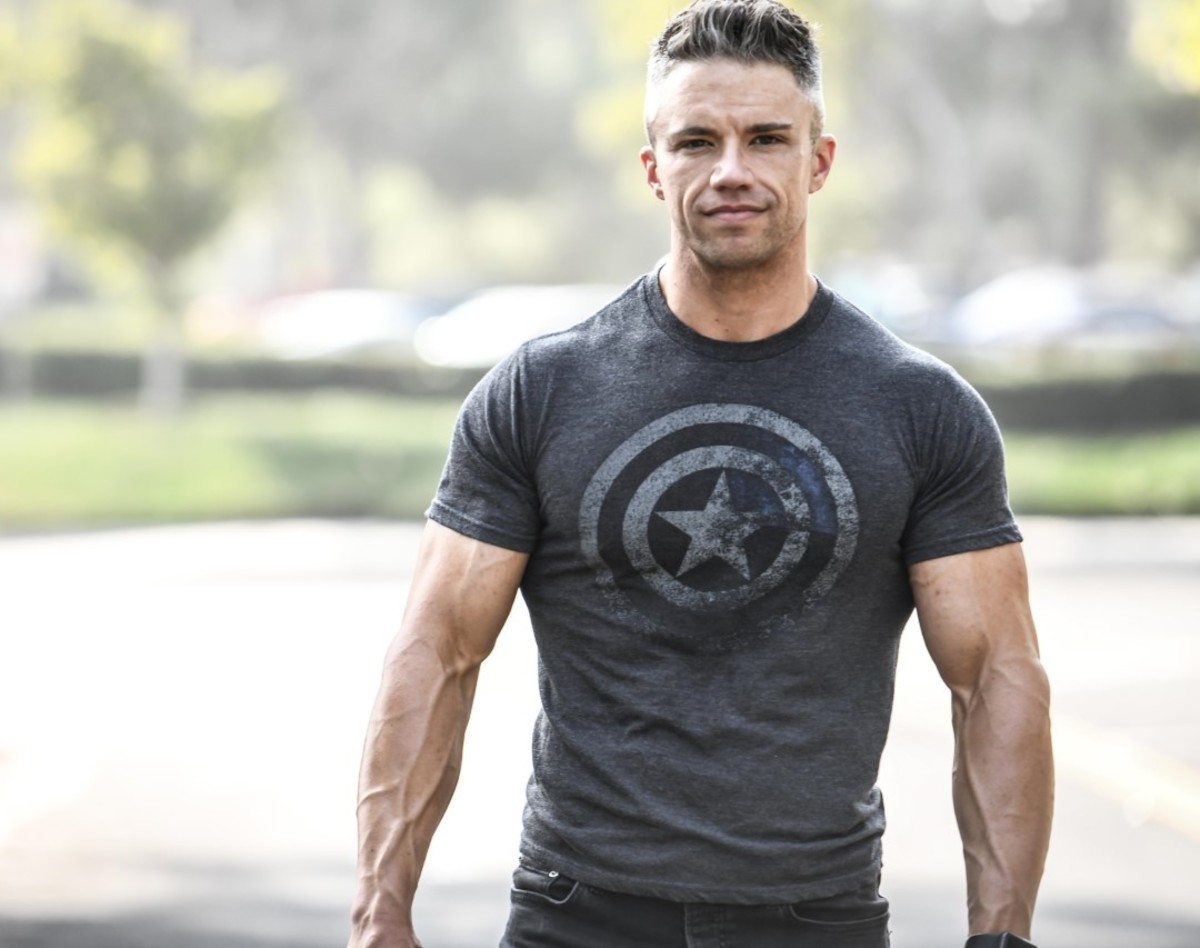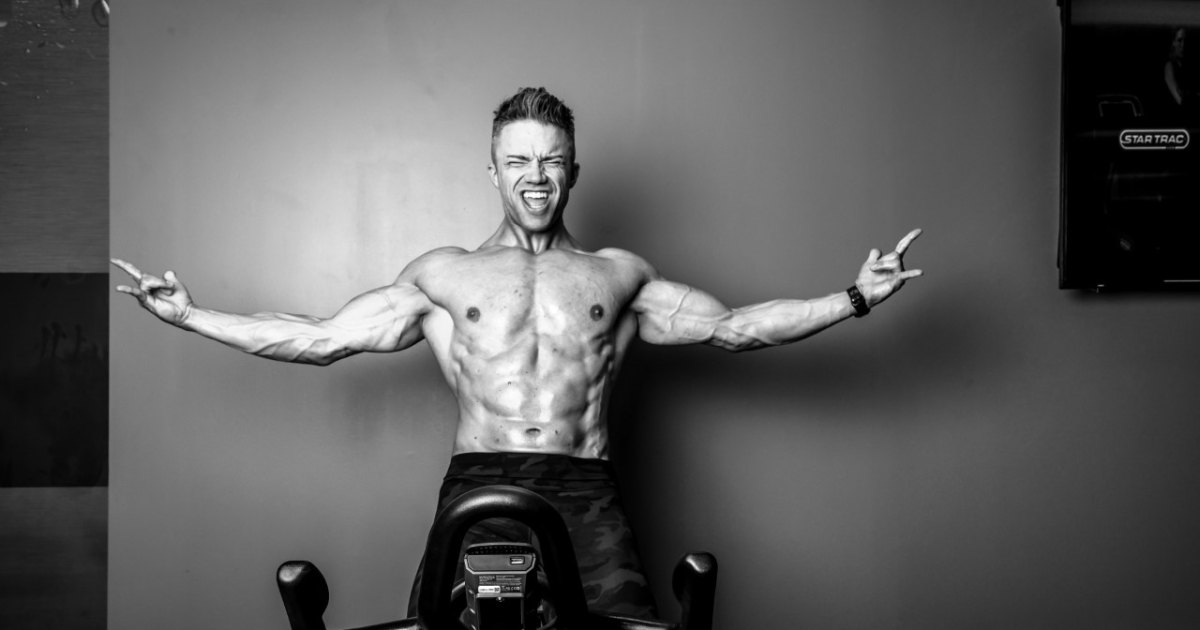No products in the cart.
Fitness Tips
Trainer Eric Thomson on Virtual Fitness and Why Burpees Are Trash
First, a disclaimer: Eric Thomson did not always look like he does today—and he’ll be the first to tell you that. In high school, he weighed 250 pounds. He had never set foot in a gym. He had no idea how to form a fitness plan or even what clothes to wear for a workout. His fitness journey began as a total outsider, but that’s exactly what helps him connect with beginners: He knows where they’re coming from.
“I’ve been on both sides of the spectrum,” he tells Men’s Journal.
Thomson is now a certified fitness trainer, but he isn’t your typical gym rat. In addition to personal training, his resume includes a years-long stint as a professional opera singer, where he toured around the world singing in various productions. Nowadays, he consults with clients one-on-one and recently joined the virtual fitness revolution as a featured instructor on Beachbody’s new BODi on-demand fitness platform (where he’s putting his performance talents to work, albeit on a very different stage). That roundabout journey informs his approach today: Helping people of all sizes and abilities make fitness a part of their lives. We recently caught up with him to learn more about his fitness philosophy, why motivation is BS, and more. Check out our conversation below.
Men’s Journal: You started your career as an opera singer. How’d you get into fitness?
Eric Thomson: When I graduated high school, I was extremely overweight. And my doctor told me, “If you continue down this road, you’re going to get diabetes.” I had always wanted to go to the gym, but my parents are not gym people, so they didn’t understand the desire for that. I went on a family vacation and kind of hit rock bottom. When I came back, I began my personal fitness journey.
But it wasn’t my career. That started when my opera colleagues couldn’t keep up because the shows are much more physically demanding than they used to be. It used to be called “park and bark.” Opera singers would just stand and sing. Now the shows are a whole lot more involved. While on tour, my friends asked me if I would help them lose weight, so I started training. When I was in Salzburg, we’d go down to the river and do laps and bodyweight training. And when I was living in Canada, I started helping people in the gym.
The tipping point came during my last round of auditions in 2013. I got “no” everywhere. That’s not uncommon, but I was sick of beating down doors just to get a job. I had just gotten married and needed to pull my weight. My husband encouraged me to get my fitness certifications. And the rest is history.
Did singing prepare you for your current job at all?
Yeah, 100 percent. From a physical standpoint, being a professional singer, you’re super in touch with your body. You understand how your body moves and operates, because your body is your instrument.
And from a performance standpoint, I use my singing experience every day. Being in front of people like that has truly helped me transition into fitness. The majority of my work in my fitness career has been group fitness—leading people in indoor cycling, HIIT classes, step classes, whatever. My opera experience lends itself quite nicely to that.
Why is it so important for people to make fitness a part of their lives?
Because fitness makes people happy. Your body is a battery, and if you’re not charging your battery correctly and taking care of your battery, the battery gets drained. And then you kind of want to throw the battery away.
Now I’m super fit, but I was the fat kid. I was also the fat adult who struggled to lose weight and really didn’t like who I was. Walking into the gym for the first time, I felt completely embarrassed.
But taking care of yourself physically not only lends itself to better physical health outcomes, but better mental health, too. I tell the folks who take my classes and my clients in the gym, “How you face the challenge in here is a direct reflection of how you face challenges out there.” And whether they believe it or not, it really is true.
Yes, the physical benefits are nice, but the mental fortitude, confidence, and emotional security I have in myself now because of fitness are truly the longest-lasting gifts.

How do you motivate people to keep pushing through a workout?
It’s funny, I heard this the other day, and it rings true: Motivation is pretty much garbage. Instead, it’s about trying to help people hold themselves accountable. That’s why I love group fitness so much, because you become a part of a community. I strive to create a community in my classes where people feel welcome. They feel seen. They feel heard. They feel important. You create this community where people are like, “I didn’t see Theresa today. Is Theresa okay?”
All of a sudden you have this whole network of people who are counting on you to be there. A team-based effort is essential because individual motivation leaves very quickly.
What opportunities does virtual fitness create?
The biggest opportunity is grabbing a whole new audience of people who never, ever thought they would exercise or set foot in a gym. The hashtag for BeachBody is #EverybodyIsABeachBody. And I have people of all sizes who take my classes. It’s our opportunity as instructors to make sure they feel just as important as the person in the front row who’s going at it like the Energizer Bunny.
People freak out about going to the gym. They’re worried about not having the right shoes, or not having the right outfit, or doing a move incorrectly and getting made fun of. But in my virtual workouts, you don’t have to worry about the social pressures or what you’re wearing. You just focus on the work. That’s the opportunity that digital fitness has presented.
To adapt to digital platforms, did you have to change the way you teach fitness?
Not necessarily. The great thing about the BODi platform, as opposed to Peloton, is people can actually stream into class, and I can see and interact with them: talk to them, correct their form, play around with them. In that regard, I really haven’t had to change my style. In fact, it just kind of enhances it. You have to work that much harder to communicate over camera, not only to demonstrate the exercises and make sure people understand your cuing, but also to create communities through a lens and have people feel like they’re a part of something.
What’s something about leading a virtual class most people probably wouldn’t know?
I plan the workouts. I make the playlists. But it’s a 50- to 70-person project to make a class run for Beachbody. You have the back end with the streaming technology. You have the light crew and the camera crew. You have the production team. You have the fitness and nutrition results team that help run the workouts. So honestly, as cool as it is to be on camera, the most important people are behind the camera. Without them, I wouldn’t know my left from my right sometimes.
What sets you apart from other trainers? Do you have a signature style or fitness philosophy?
I say it like this: Exercise is supposed to stimulate you, not annihilate you. A lot of trainers pride themselves on giving extremely hard workouts. I don’t believe in that. You should be able to train anybody at any given time and meet them where they’re at. My goal is for my clients and class participants to be able to exercise on their own. I want to empower them to own their bodies and own their fitness routine. They should feel confident in their abilities because I’ve done my job educating them on how to do it for themselves—and do it for the rest of their life, too. Exercise shouldn’t be a period of time in your life. It should be every freaking day.
So that’s where the phrase “stimulate not annihilate” comes into play. If I’ve annihilated a client, then I didn’t do my job well. That’s not to say that you don’t work hard or push yourself to your edge. But you shouldn’t come into the gym trashed. That’s not healthy.
What are your favorite and least favorite exercises?
My favorite thing to do is indoor cycling. I love teaching indoor cycling classes and I love taking indoor cycling classes. It was my first certification in the industry, and it’s actually what inspired me to become a fitness professional. One of my best friends and mentors is a fitness instructor, and one day I took her cycling class, and I said, “This is what I want to do.” It’s the combination of performance, music, and fitness all in one place. I’m a happy camper when I’m on the bike.
My least favorite exercise is a burpee. Most people can’t support themselves in a pushup plank position—and with a burpee, you’re asking them to compound on top of it. I think it’s a total trash exercise.
How do you pick your music for classes?
I always plan out my workouts first, then I have a library of music on Spotify that I use. The music I like to bring to class is remixes, mashups, EDM, generally high-energy music. And I look for songs that not only match the workout but also bring people on an emotional journey. Those songs provide inspiration and motivation, especially at the times where I know they’re going to be working a little harder. Hopefully the words carry them through.
What are your go-to songs or artists for workout classes?
Probably my favorite and most-used artist, according Spotify, is David Guetta. I just love the energy in his music, and it lends itself well to fitness classes. He also collaborates with really good artists, and a lot of the lyrics are perfect for helping people get through the next challenge.
And after that, Britney Spears. That’s just me—I’ve loved her music since I was 12 years old. I always tell people in my classes, “At some point, the living legend herself, the one, the only, Ms. Britney Spears will grace your ears.”

How does nutrition fit into fitness? Any key tips on healthy eating?
You can’t outwork a bad diet. Nutrition is king when it comes to seeing the actual change in your body. For me personally, I’ve been through all of the diets—the Mediterranean diet, the Atkins diet, keto. The one thing that’s stood out to me over the last 10 years is macro counting. No food or drink is off-limits, just everything in moderation. I do use a food scale, and I measure out my food. It’s not punishment; it’s just keeping me accountable to my goals and what I need to do for my body.
I don’t believe in restriction. Restriction leads to binging and nonadherence to your program. Instead, it’s about creating a caloric deficit. I always tell my clients, “Wouldn’t you rather eat pizza and lose weight than eat cardboard for six months to lose weight just to probably gain it back?” So that’s my whole thing: Learn how to lose weight while eating the foods you love.
CBD products for athletes have really taken off in the past few years. What’s the benefit of CBD from a health perspective? What CBD products do you use?
I use Sky Wellness CBD cream for recovery. I like to rub it on my joints, especially when they’re a little bit achy, or after a workout with more plyometric-based movements. It’s soothing and calming, but more importantly, it helps stimulate muscle damage repair. That’s the primary reason I use it.
What advice would you give to someone who’s just starting out with fitness?
Start low, go slow. Pick two to three days a week that you know you can commit to exercise. It doesn’t need to be anything heroic. It can be 20 minutes. Just start building the habit and learning to love your body where you’re at today.
This interview has been edited for length and clarity.
For access to exclusive gear videos, celebrity interviews, and more, subscribe on YouTube!
Source link

